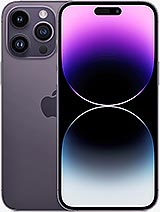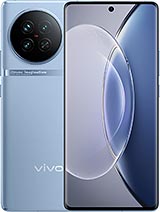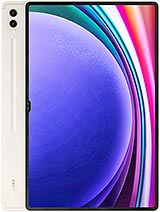Apple iPhone 15 Pro Max review

Performance, benchmarks, stress tests
The iPhone 15 Pro and Pro Max are powered by Apple's latest invention - the Apple A17 Pro chipset. The Bionic moniker is no more, as this new piece of silicon brings the iPhone models to a whole new level with console-grade graphics and hardware ray tracing acceleration. According to Apple, of course.

The maker has such confidence in its new "console-level" 6-core Apple GPU that it has made sure it has console games soon after launch. Apple has secured Resident Evil Village, Resident Evil 4 Remake, and Assassin's Creed Mirage (the latest AC title!) ports for the iPhone 15 Pro - these will come in early 2024.
There is no denying that these games will be optimized for the new iPhones and will work well. Furthermore, it is quite exciting to see popular recent console titles coming on iOS.
The new Apple A17 Pro chipset is the first ever mass-market SoC manufactured by TSMC 3nm process node, and it contains 19 billion transistors. The A17 Pro still has a 6-core processor with 2 performance cores clocked at 3.78GHz and 4 efficiency cores working at 2.02GHz. Apple claims the performance cores are 10% faster than those in the A16 Bionic and that's easy to believe seeing how their clock speed is 10% faster too.
The GPU is a 6-core unit, which Apple claims is 20% faster than its predecessor in peak performance. The GPU enables hardware-accelerated Ray Tracing, which is supposedly 4 times faster than the software-based Ray Tracing on last year's chip. This means the GPU won't offer that much, if any, performance bump over the last year 5-core GPU, but it will make the raytracing toll on the hardware way lighter (and thus better graphics).
The Neural Engine is a 16-core unit that Apple says is twice as fast as last year's chip for machine learning operations.
The A17 Pro SoC features a Display Engine with hardware AV1 decoding and a ProRes codec. The chip allows the new iPhone 15 Pro models to capture 4k 60fps in ProRes RAW, along with support for the industry standard ACES color profile.
Finally, the new Pro models feature 8GB LPDDR5 RAM. You can opt for 256GB, 512GB and 1TB NVMe storage options.
And now it's benchmark time!
The single-core CPU performance has an obvious increase of 10% over the 14 Pro Max, while the multi-core one is about 6%.
We've got GPU scores from the GFX Benchmark, but they are all over the place. It hasn't been updated since 2020 with support for newer devices, and this could be the reason.
We got 3D Mark scores, though, and this benchmark has been updated more recently on iOS. The GPU inside the A17 Pro shows a minor 10% improvement over the 14 Pro Max and its A16 Bionic GPU on the WildLife Extreme GPU test, but a massive improvement of 60% on the Solar Bay Raytracing test.
The compound AnTuTu 10 test puts the iPhone 15 Pro Max among the best in the world.
So, regarding raw performance, the iPhone 15 Pro is among the fastest phones in the world, and its GPU is surely the fastest, especially regarding ray tracing.
The internet has been boiling with stability concerns over the new A17 Pro chipset, so we did some extensive testing.
Let's start with our usual stress tests - APSI Benchmark and 3D Mark.
When it comes to stability during sustained CPU load, the 15 Pro Max throttled to 78% in the 30 minute APSI Bench continuous CPU test. That's a respectable result. Last year, we got 92% on our 14 Pro Max and iOS 16. This year, we decided to test it again on iOS 17, and we got 76%. Weird!
We ran the test again for another 30 minutes right after it ended, and it returned about 95%, which means the CPU has reached a sustainable level at 78% peak performance and can stay there for as long as it is needed.
Moving on to some GPU testing.
First, we ran our usual 3D Mark Wildlife Stress Test. Here, the iPhone 15 Pro Max scored 70% stability, which is a great one, especially for flagships with passive cooling and glass panels.
We also ran the 3D Mark Solar Bay stress test with ray tracing, where we got about 60% stability.


GPU stress test • GPU stress test with raytracing
Then we did the same thing but ran the tests twice. On the second run of each of those tests, we got another drop, which would bring the total throttling that happened over the span of 40 minutes down to 50%. Note that it did not happen immediately but evenly over time. Eventually, the GPU settled at 50% of its performance, and that appears to be its bottom if no external conditions are involved (such as super-hot weather).
We also played Call of Duty for about 40 minutes without noticing performance drops or hiccups. Same goes for 1 hour of Pokémon Go, though this game is arguably not as demanding. We are sure throttling did occur, but it was not something we could feel.
Lastly, we did read reports of overheating iPhones, some during fast charging. For this review, we used two iPhone 15 Pro Max units, obtained from different retailers, and neither of those became unbearably hot even after an hour of GPU stress testing. Warm, rather unpleasantly (but not concerningly) - sure, but hot - never. We know people have experienced and documented such issues, but we haven't been able to replicate those so far on our units.
And since we ran the same tests on the iPhone 14 Pro Max, which last year we crowned as a phone with excellent stability, we were surprised to see that now, under iOS 17, its stability has gotten worse. That's why we think there is some software issue at play in addition to/or just contributing to the poor heat dissipation.
And one last observation: the iPhone 15 Pro lost about 15% of battery juice during one hour of 3D Mark stress testing, which is quite an admirable result that speaks greatly for its gaming capabilities.
The Apple A17 Pro turned out not to be the big deal Apple claimed it to be, even if it looks to be among the fastest chips in the world. But its ray tracing capabilities seem incredibly promising, and the GPU is surely ahead of the competition.
Just like any other chipset, the A17 throttles its GPU down to 50%, so it can keep the phone from overheating during extensive hour-long GPU stress testing. And this is the longest GPU stress test we've done on a phone ever, so there may be a lot more that get down to 50% performance after a couple of consecutive runs.
While we have not experienced any overheating issues, some people have, and we believe there is some software problem that needs to be taken care of. Here is hoping Apple will fix that soon.
Overall, it's a solid performance from the latest iPhone, but it could be plagued with some issues.
Reader comments
- Ingvaar
- 22 Apr 2025
- JK{
Hi, I agree with you on a lot of points you made, but I have to make a little correction. When you type and you make a mistake, you can go back and correct it by pressing and holding the space button on your keyboard and moving your finger (like s...
- NeilLaw
- 13 Dec 2024
- m5Y
My first and last iPhone. I honestly don't know how to begin my frustrations. Being a long time android user I was looking forward to the "it just works" however Lack of decent keyboard options, SwiftKey and gboard feel feat...
- Anonymous
- 19 Sep 2024
- IbL
Then the phone would be too expensive and the charging would take to long and they w8uld need to redesign the entire case to fit the battery







